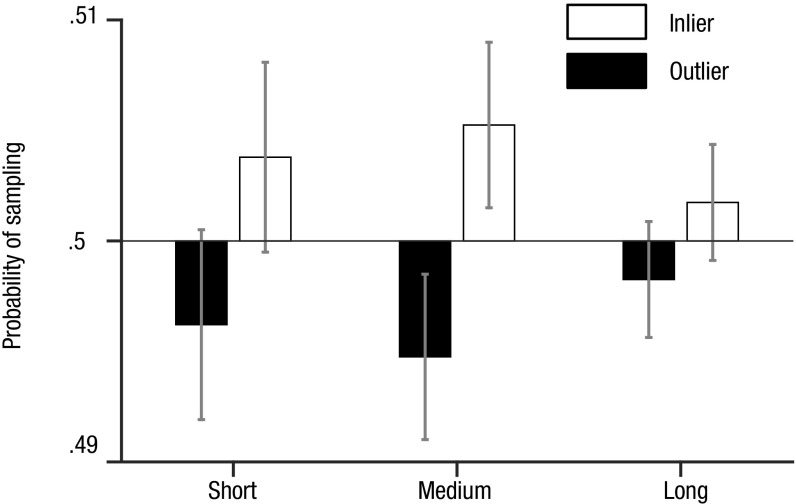Fig. 3.
Preference to fixate inlying items: the probability to sample inliers/outliers on each fixation in the real human data in comparison with the null distribution. Probabilities higher than 50% show an increase of sampling relative to the null distribution (and vice versa). The main effect of preference to sample inliers was significant [F(1, 53) = 8.58, P < 0.01]. The medium Euclidean distance fixations largely drove this effect [t(53) = 2.74, P < 0.01], whereas the effect was not significant for short and long distances (P > 0.05). The main effect of distance [F(1.9, 100.67) = 1.71, P > 0.05] and its interaction with sampling policy [F(1.89, 100.38) = 1.168, P > 0.05] were not significant. Bars are shown with 95% confidence intervals across the cohort.

